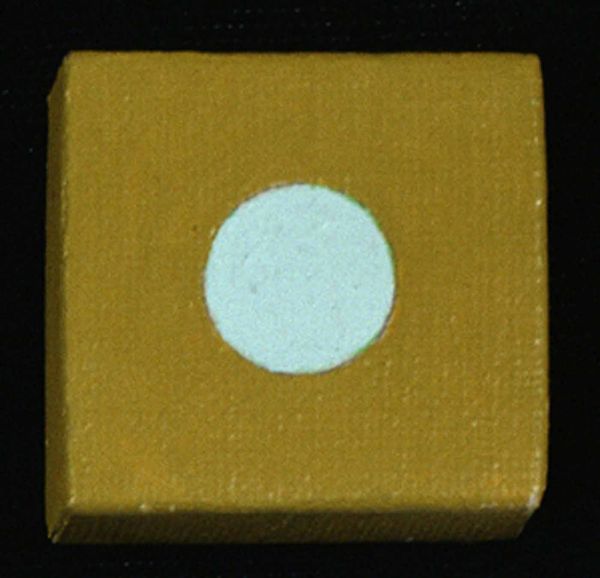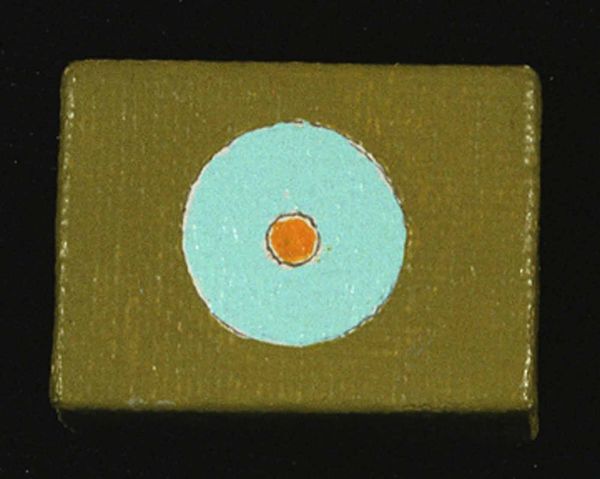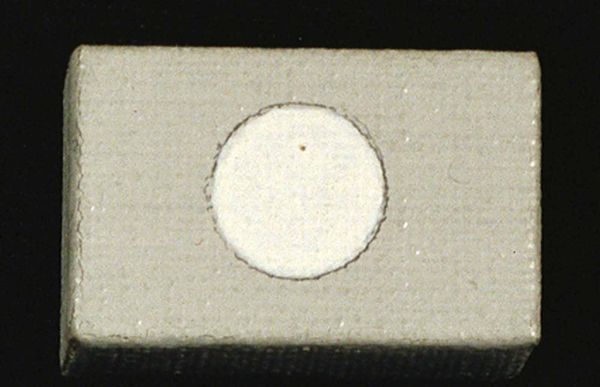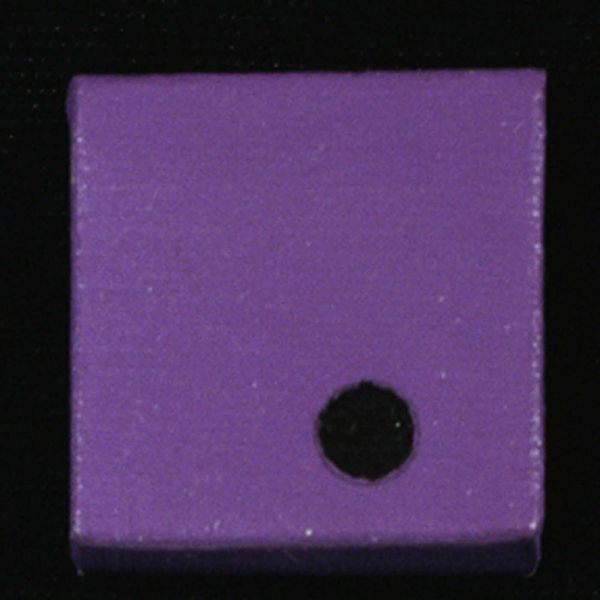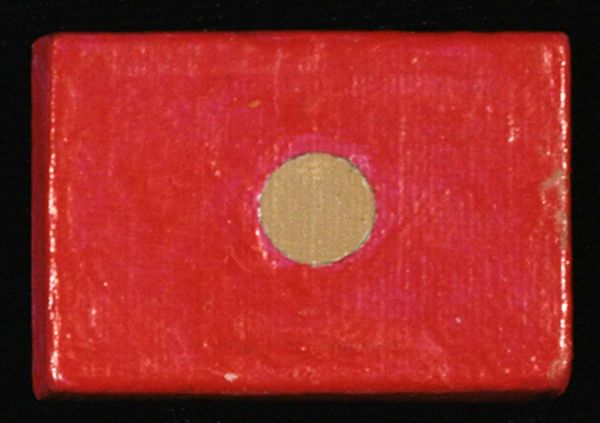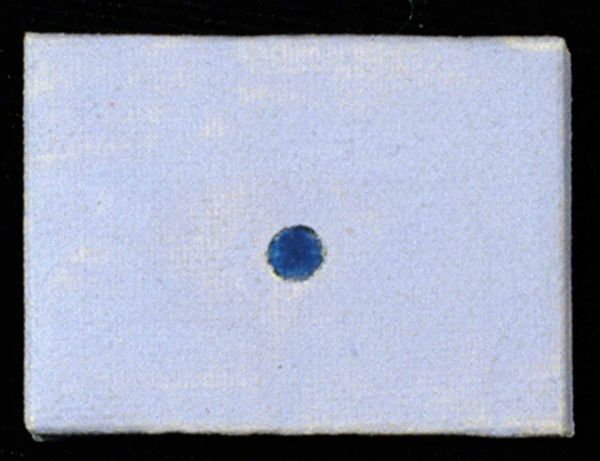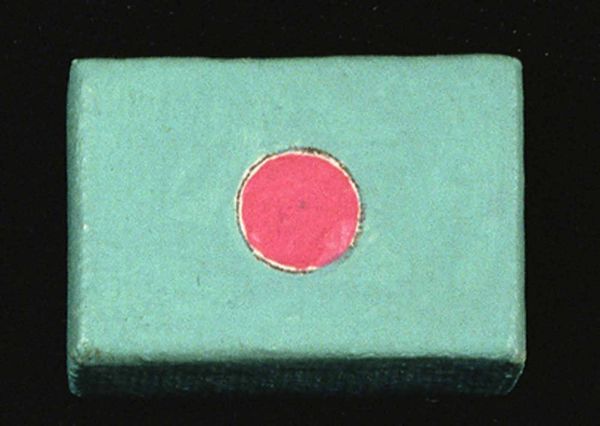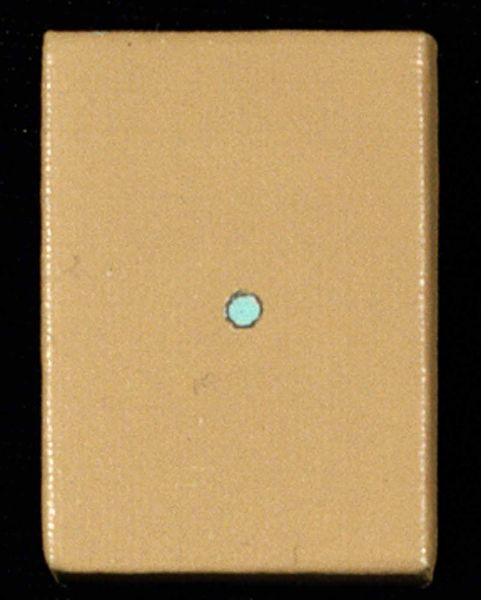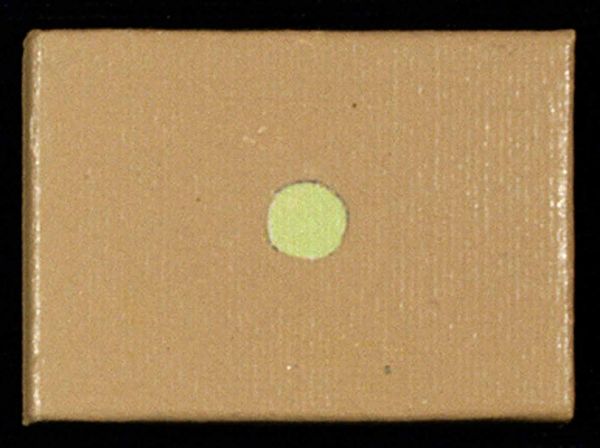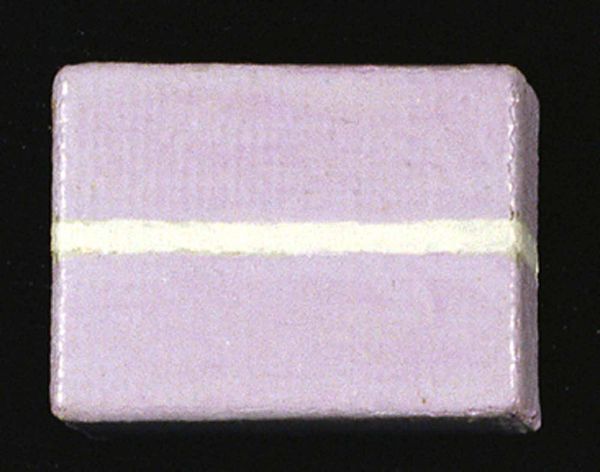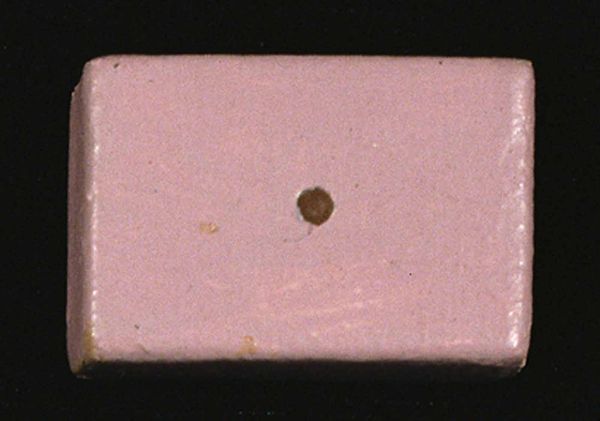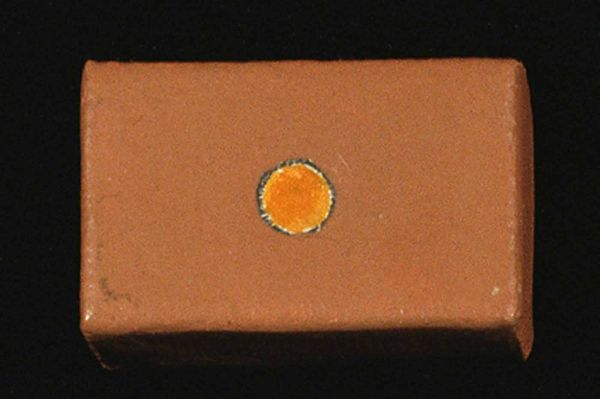
painting, acrylic-paint
#
abstract-expressionism
#
non-objective-art
#
painting
#
acrylic-paint
#
geometric-abstraction
#
modernism
#
watercolor
Copyright: Gene Davis,Fair Use
Curator: Let’s consider Gene Davis’ “Micro-Painting” from 1968, an acrylic painting rooted in the abstract expressionist movement. Editor: It’s unassuming, isn’t it? Stark even. At first glance, a basic geometric design—a dark blue circle inside a turquoise one, centered on a beige square—that feels constrained by its edges. Curator: Constrained maybe, but also distilled to its purest form. Davis was deeply influenced by the political turbulence of the era. Could this tight composition symbolize a controlled environment amidst broader social upheavals? Editor: That's an interesting perspective. I see something different—a focused engagement with the medium itself. The beige appears subtly layered; the blue and turquoise read almost like enamel, each layer reacting uniquely with the base. I’m fascinated by what this can tell us about the qualities of the paint that were available and what their manufacturing might have looked like at the time. Curator: Exactly. Davis was engaging in a wider discourse on modernist ideals, using the non-objective to represent more complex societal realities. The emphasis on these pure shapes can be read as a form of protest against representational forms and their historical associations. It's like a rejection of figurative art's traditional power dynamics. Editor: Yet, I find myself drawn back to its simple form, which seems so antithetical to a traditional painting and more inline with a tile. This raises a point about artistic labor and class dynamics. How accessible were these materials? Curator: Indeed. Looking at the materials themselves brings up labor questions. This challenges a narrative that can otherwise exist where art becomes separated from the processes used to produce it and becomes seen only as an act of individual genius rather than as the culmination of collective resources. Editor: Seeing it with fresh eyes makes me more appreciative of how Davis uses geometry to achieve visual clarity. Curator: Exactly, the canvas becomes a mirror, showing the world in a concentrated way and a specific product of the time, in dialogue with social movements and questions of production.
Comments
No comments
Be the first to comment and join the conversation on the ultimate creative platform.
